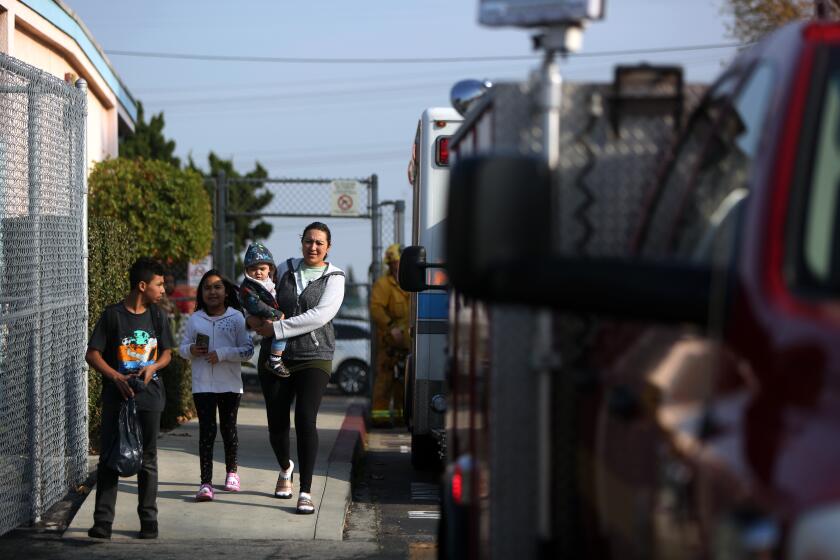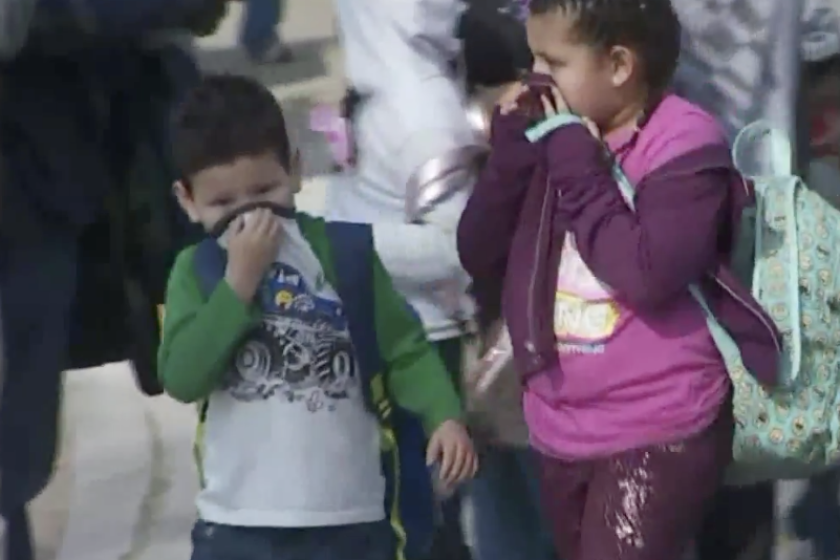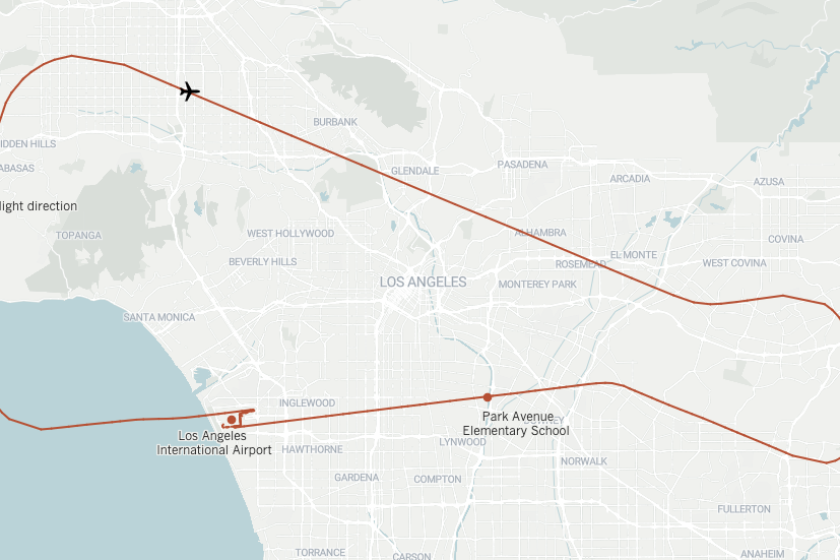Listen: Radio call to LAX tower raises questions about jet fuel dump over school

Communications between air traffic controllers and the Delta pilot raise questions about why fuel was dumped over Cudahy roughly 20 minutes into the flight.
A Delta Air Lines pilot was roughly five minutes into a flight from Los Angeles International Airport to Shanghai on Tuesday when he radioed the control tower that he was having problems with the right engine on the jetliner.
A controller asks whether he needs to return to the airport immediately or to “hold to burn fuel.” The pilot responds that they’ve “got it back under control,” will slow down, stay out of terrain and turn back to the airport.
“OK, so you don’t need to hold to dump fuel or anything like that?” he asks the pilot. The pilot responds: “Negative.”
Yet less than 20 minutes later the jet, flying at about 2,300 feet, dumped fuel over Park Avenue Elementary School in Cudahy, dousing children on the playground and sparking outrage in a community that’s been at the center of environmental injustices for decades in Los Angeles County. Dozens of people — many of them children — were treated by paramedics, but no one was seriously injured.
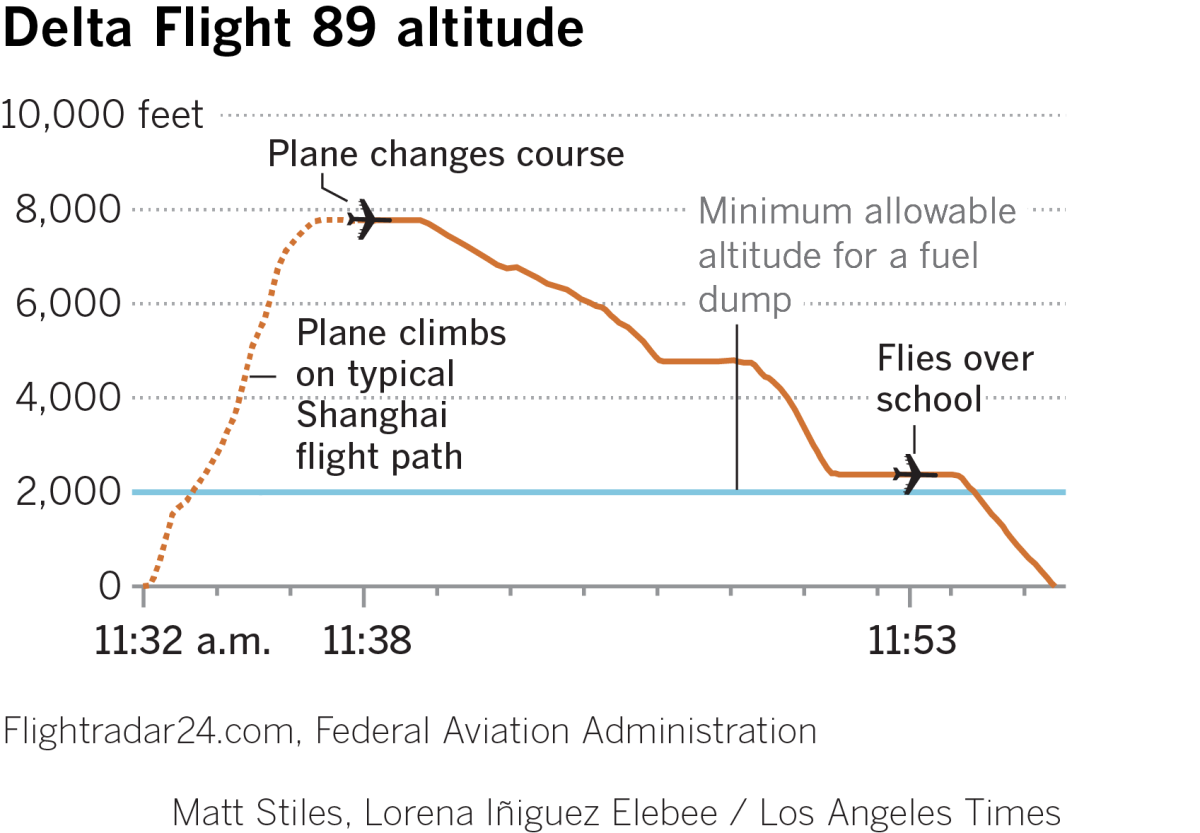
The Times analyzed more than 300 flight paths of Delta flight 89 over the last year provided by Flightradar24, a firm that specializes in maintaining and publishing detailed industry data worldwide. According to the flight-mapping data, the pilot had been on one of two typical routes that Delta flies to Shanghai when he turned back toward L.A. One path takes jets farther west over the Pacific Ocean, while the other turns north over Malibu and the Santa Monica Mountains before veering west. In tracking Tuesday’s flight, the pilot appeared to be taking the latter route and was already over land when he seemed to divert from the expected course above Hidden Hills.
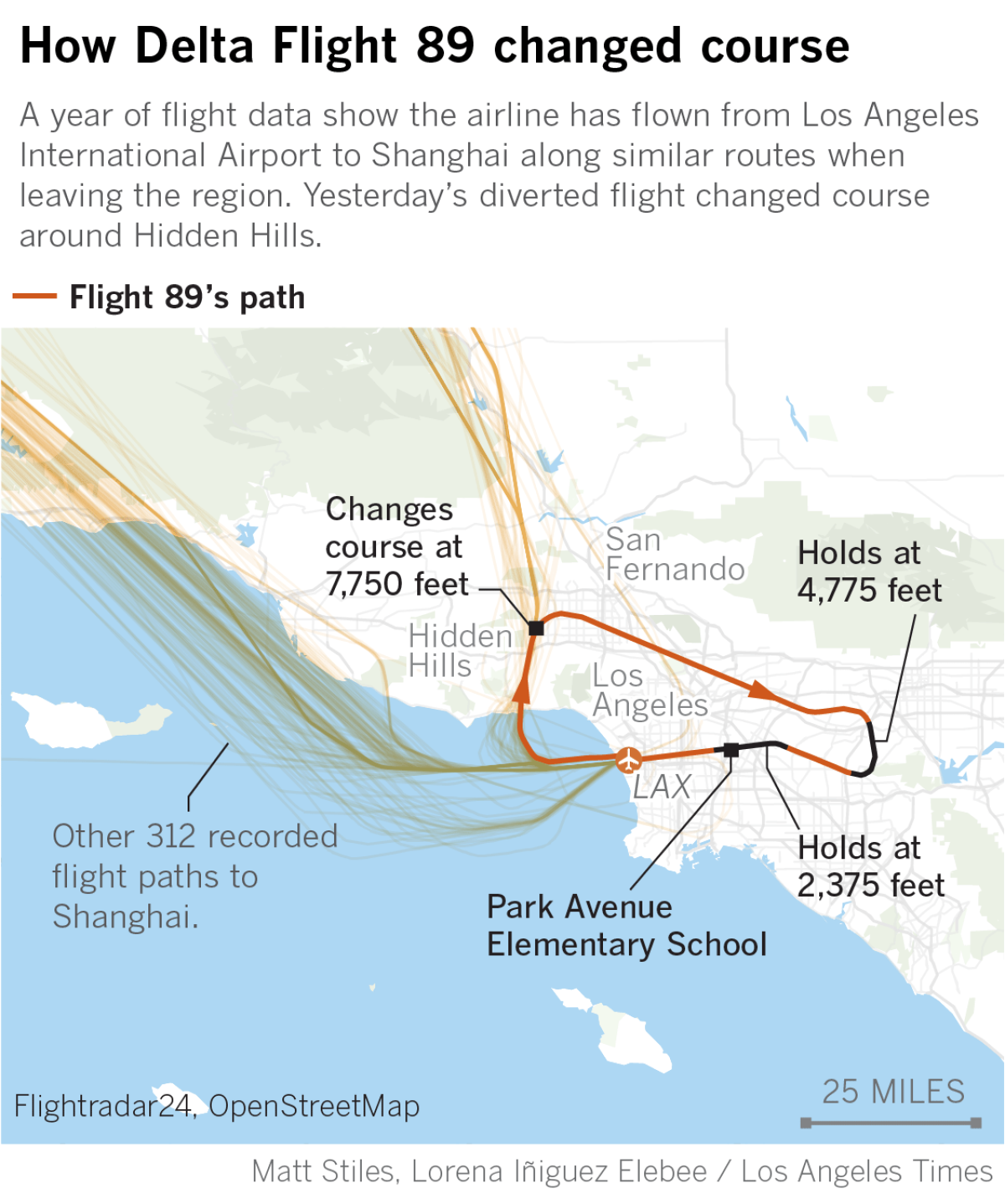
The radio transmissions between the pilot and air traffic controllers raise new questions about why the pilot showered fuel over such a large swath of populated neighborhoods. Federal regulators have said fuel dumping should occur in remote areas. And while the plane was within Federal Aviation Administration guidelines when it dropped the fuel, experts have said the best practice is to discharge at a higher elevation so that fuel dissipates before it hits the ground.
How did pilots of a Delta jetliner end up dumping fuel on a playground filled with children in Cudahy? That is the question many are asking.
During emergency situations, air crews will typically notify air traffic control and indicate they need to dump fuel. The controllers will then direct a plane to the appropriate fuel-dumping area. This did not happen during Tuesday’s brief flight, according to officials with FAA, which is investigating the incident.
When pilots dump fuel, they typically try to do so above 10,000 feet and over a body of water, such as an ocean, where the fuel will turn to mist and dissipate, away from populated areas, experts say.
Aircraft maker Boeing says if fuel is dumped at an altitude of higher than 5,000 feet, it should turn to vapor before reaching the ground.
“In this emergency situation, the fuel-dumping procedure did not occur at an optimal altitude that would have allowed the fuel to atomize properly,” the FAA said in a statement.
However, FAA regulations do allow dumps at lower altitudes — at least 2,000 feet higher than anything on the ground within five miles, the agency said.
Delta spokesperson Adrian Gee said Tuesday the pilot was forced to dump fuel over an urban area to reduce the plane’s weight before the return landing. It was not immediately clear how much fuel was dropped or what happened between the pilot’s last public communications with air traffic control and the time he landed at the airport at 11:56 a.m.
Delta did not respond Wednesday to a request from The Times for further information.
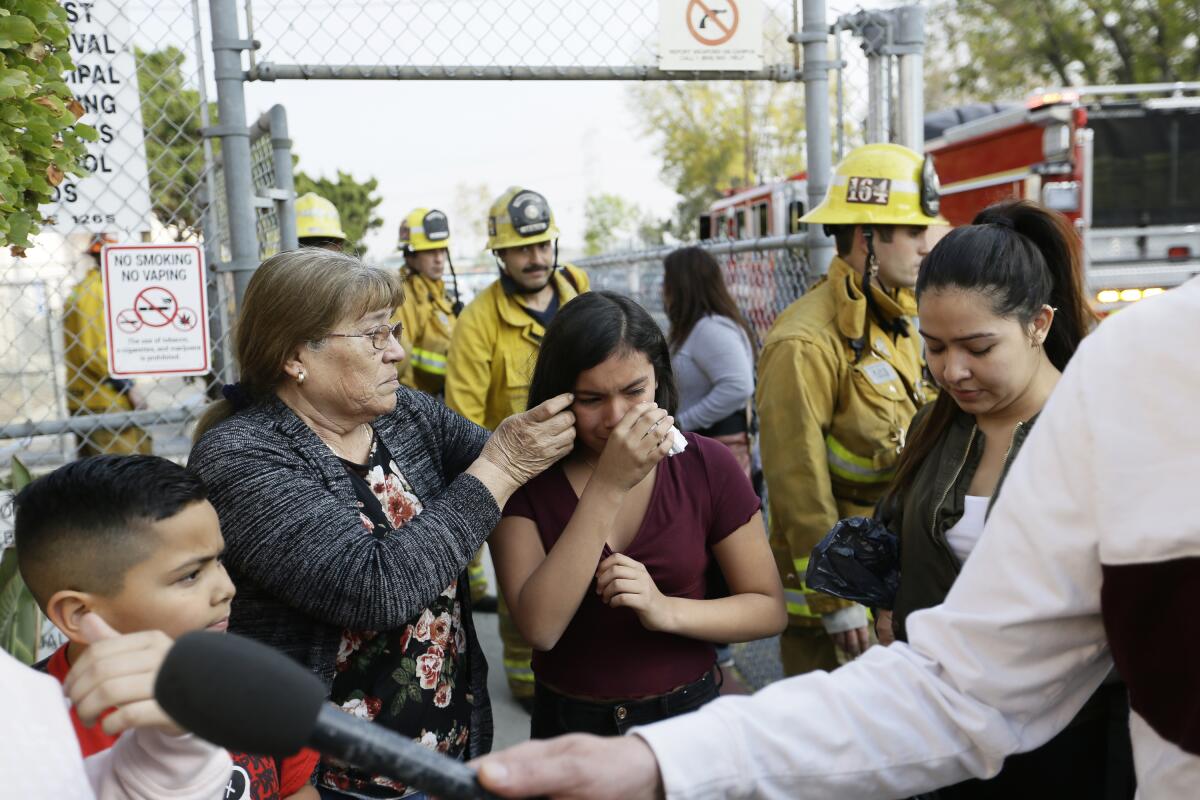
Ross Aimer, CEO of Aero Consulting Experts, said fuel dumping is very rare and is used only in case of emergencies or if pilots have to reach a safe landing weight.
“Most pilots choose not to dump fuel unless the emergency really dictates it,” Aimer said.
In Tuesday’s incident, the plane was experiencing a compressor stall, according to transmissions between the pilot and the airport tower as well as a radio call the Los Angeles Fire Department received at 11:47 a.m.
The incident rattled the community Cudahy in an area of Los Angeles County that has long dealt with environmental injustices.
“We have a Boeing triple 7, call sign Delta 89, reporting a compressor stall, 181 souls on board, 12 hours of fuel, ETA less than five minutes,” an LAFD firefighter said.
When the compressor of a plane’s engine stalls, it can cause a loss of airflow through an engine, which can cause the engine to fail.
However, compressor stalls are relatively common and aren’t typically considered a dire emergency that would necessitate an immediate landing, according to safety expert and aviation consultant Robert Ditchey.
The Boeing 777 is ETOPS-certified, an acronym used in aviation signifying “extended operations,” which means the two-engine aircraft can fly an extended duration on one engine, Ditchey said. That would suggest there was no immediate urgency to land, he said, per Boeing and FAA standards.
One aviation expert called fuel dumping very rare, saying, “I don’t remember anyone dumping fuel over population.”
Still, the decision to return to LAX prompted the question from the control tower about dumping fuel. Whether the instruction to release the fuel came from air traffic control or Delta, the ultimate decision-maker would be the pilot, who would have been aware he was flying over a residential area rather than the ocean or other unpopulated area, Ditchey said.
“Dumping is literally a toggle switch. How much fuel you dump is a decision that the captain or Delta Airlines Operations Control would discuss,” he said.
At one point in the audio communications, the pilot tells ground control that 181 people, including crew members, are aboard the plane. According to Seat Guru, a site that tracks the layout of planes, that number would have meant the flight was about two-thirds full.
If that was the case, Ditchey said, it would suggest that a decrease in weight would not have been a major issue because the plane was not at maximum capacity.
The Shanghai-bound flight left LAX, looped over the San Fernando Valley and southeastern L.A. County before making an emergency return to the airport.
The fuel dump has raised concerns about environmental safety in the flight path over Cudahy and other cities.
“Sadly, our entire community has been adversely impacted by this incident, including dozens of children. I am calling for a full federal investigation into the matter, and expect full accountability from responsible parties,” Cudahy City Council Member Jack Guerrero said.
Times Staff Writers Ruben Vives and Samantha Masunaga contributed to this report.
More to Read
Sign up for Essential California
The most important California stories and recommendations in your inbox every morning.
You may occasionally receive promotional content from the Los Angeles Times.
